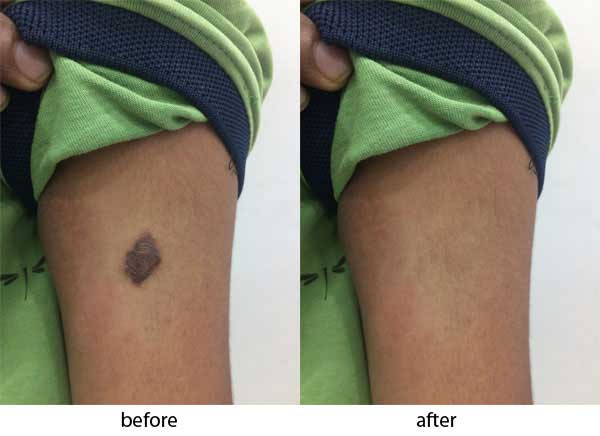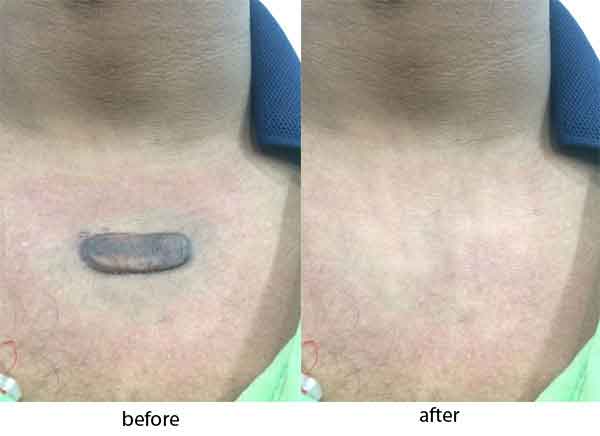What is a keloid scar?
Keloids can be considered to be “scars that don’t know when to stop.” A keloid treatment, sometimes referred to as a keloid scar, is a tough heaped-up scar that rises quite abruptly above the rest of the skin. It usually has a smooth top and a pink or purple color. Keloids are irregularly shaped and tend to enlarge progressively. Unlike scars, keloids do not regress over time.
What is the cause of keloids?
Doctors do not understand exactly why keloids form. Alterations in the cellular signals that control proliferation and inflammation may be related to the process of keloid formation, but these changes have not yet been characterized sufficiently to explain this defect in wound healing.
What are keloid risk factors?
Individuals with darkly pigmented skin are 15 times more likely to develop keloids, with those of African, Hispanic, and Asian ethnicity are at greatest risk. Keloids are equally common in women and men. Keloids are less common in children and the elderly. Although people with darker skin are more likely to develop them, keloids can occur in people of all skin types. In some cases, the tendency to form keloid teatment seems to run in families. Studies have not as yet delineated the exact genes responsible for this predisposition.
Is it possible to remove a keloid?
The decision about when to treat a keloid depends on the symptoms associated with its development and its anatomical location. A chronically itchy and irritated keloid can be quite distracting. Keloids in cosmetically sensitive areas that cause disfigurement or embarrassment are obvious candidates for treatment. It is unclear whether early keloid treatment is important. What is clear is that larger keloids are more difficult to treat.
What are keloid symptoms and signs?
Keloids occur from the overgrowth of scar tissue. Symptoms occur at a site of previous skin injury.
The symptoms of a keloid can include:
- a localized area that is flesh-colored, pink, or red
- a lumpy or ridged area of skin that’s usually raised
- an area that continues to grow larger with scar tissue over time
- an itchy patch of skin
Keloid scars tend to be larger than the original wound itself. They may take weeks or months to develop fully.
While keloid scars may be itchy, they’re usually not harmful to your health. You may experience discomfort, tenderness, or possible irritation from your clothing or other forms of friction. In rare instances, you may experience keloid scarring on large areas of your body. When this occurs, the hardened, tight scar tissue may restrict your movements.
Keloid treatment are often more of a cosmetic concern than a health one. You may feel self-conscious if the keloid is very large or in a highly visible location, such as an earlobe or on the face. Sun exposure or tanning may discolor the scar tissue, making it slightly darker than your surrounding skin. This can make the keloid treatment stand out more. Keep the scar covered when you’re in the sun to prevent discoloration.
What are treatment options for keloids?
The methods now available to treat keloids are as follows:
- Corticosteroid injections (intralesional steroids): These are safe but moderately painful. Injections are usually given once every four to eight weeks into the keloids) and usually help flatten keloids; however, steroid injections can also make the flattened keloid redder by stimulating the formation of more superficial blood vessels. (These can be treated using a laser; see below.) The keloid may look better after treatment than it looked to start with, but even the best results leave a mark that looks and feels quite different from the surrounding skin.
- Surgery: This is risky because cutting a keloid can trigger the formation of a similar or even larger keloid. Some surgeons achieve success by injecting steroids or applying compression (using a specialized pressure device where appropriate) to the wound site for months after cutting away the keloid. Superficial radiation treatment after surgical excision has also been found to be useful.
- Laser: The pulsed-dye laser can be effective at flattening keloids and making them look less red. keloid Treatment is safe and not very painful, but several treatment sessions may be needed. These may be costly, since such treatments are not generally covered by insurance plans.
- Silicone gel or sheeting: This involves wearing a sheet of silicone gel on the affected area continuously for months, which is hard to sustain. Results are variable. Some doctors claim similar success with compression dressings made from materials other than silicone.
- Pressure: Special earrings are available, which when used appropriately, can cause keloids on the earlobe to shrink significantly.
- Cryotherapy: Freezing keloids with liquid nitrogen may flatten them but often darkens or lightens the site of treatment.
- Interferon: Interferons are proteins produced by the body’s immune systems that help fight off viruses, bacteria, and other challenges. In recent studies, injections of interferon have shown promise in reducing the size of keloids, though it’s not yet certain whether that effect will be lasting. Current research is under way using a variant of this method, applying topical imiquimod (Aldara), which stimulates the body to produce interferon.
- Fluorouracil and bleomycin: Injections of these chemotherapeutic (anti-cancer) agents, alone or together with steroids, have been used for treatment of keloids.
- Radiation: Some doctors have reported safe and effective use of radiation to treat keloids.
Is keloid prevention possible?
The best way to deal with a keloid is not to get one. A person who has had a keloid should not undergo elective or cosmetic skin surgeries or procedures such as piercing. When it comes to keloids, prevention is crucial, because current treatments leave a lot to be desired.
What is the prognosis for keloids?
Small keloids can be effectively treated using a variety of methods. Generally, a series of injections of steroids into the problem area is the simplest and safest approach. The patient needs to understand that the keloid will never entirely disappear but is likely to become less symptomatic and flatter. Larger lesions are more difficult to treat.






